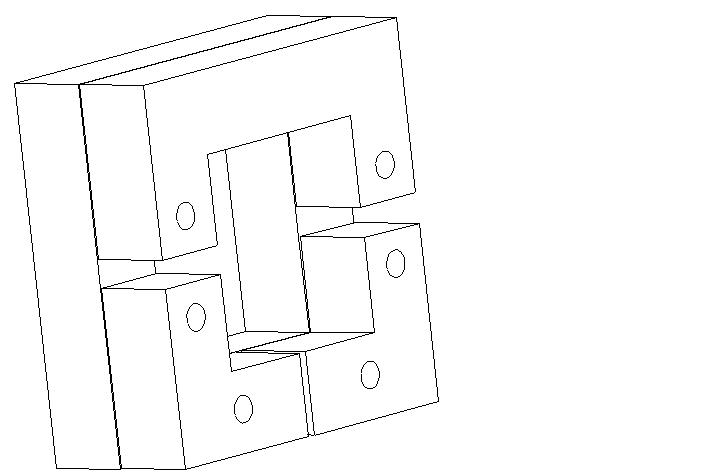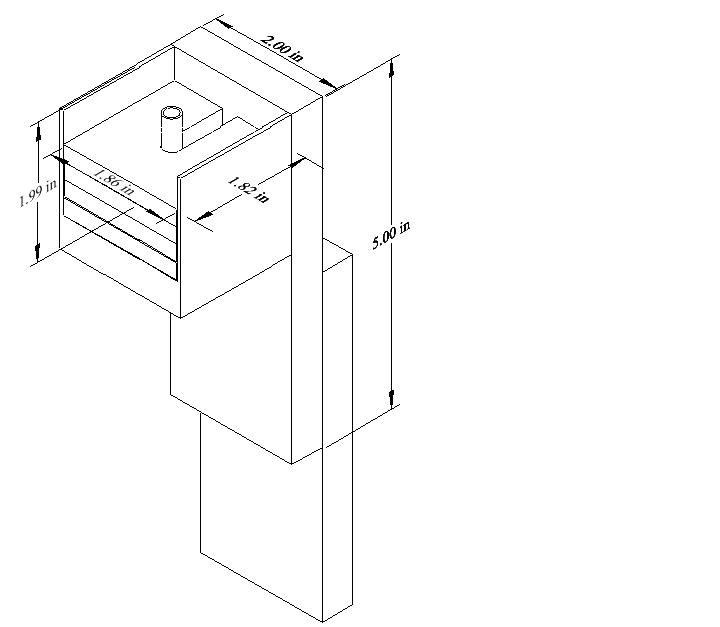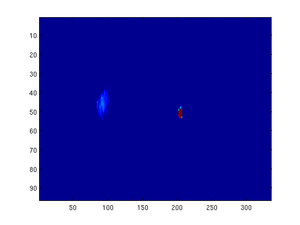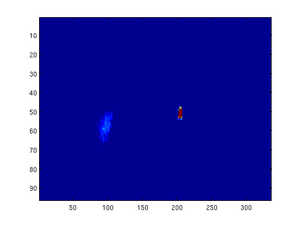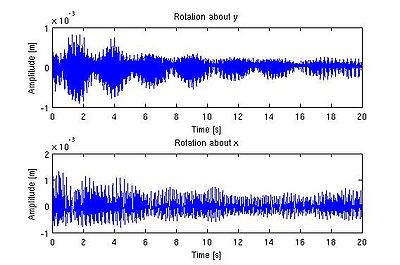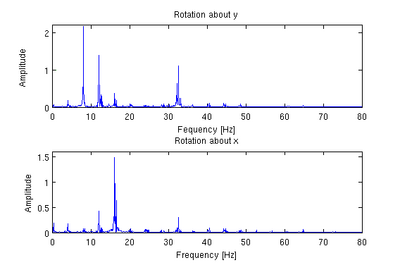Development of a Direct Imaging Technique for Vibrational Analysis
Abstract
During the development of the Michelson interferometer, it was determined that the natural resonance amplitude was simply too great to perform interferometry. A direct imaging approach was suggested as a way to determine the vibration amplitude for the very high vibrations at the low wire tension originally used for mounting. This technique involves using the interferometry set up with the reference mirror and beam expander removed. The laser is passed directly through the beam splitter cube, with one half beam illuminating the diamond and the other removed. That illuminated spop is tne passed back through the cube and into our high speed camera. This beam creates two spots on our image. One is the point to point focus spot. The other is an artifact known as a lens flare. Typically lens flares are undesirable, but in our case, the lens flare movement directly correlated to the angular movement of the reflected beam spot on from lens surface. By careful calibration, the pixel movement on the image versus the angular displacement of the diamond surface was determined.
Equipment
Diamond Mount
The following is the initial design of the mount which will be used in the GlueX experiment
We currently have two of these mounts produced and are using one of them in the vibrational analysis. The split bottom bracket allows us to tension and secure each fiber bundle separately.
Tensioning device
After several failed attempts to tension the wires, it was determined that the amount of manual contact with the fibers was causing them to break. To remedy this issue, a tensioning device was developed.
The carriage has several weight plates which are attached to the center hub by a washer attached to the bottom. The device allows us to apply different tensions by changing the number of weighting plates used. The wires are tensioned individually to avoid the potential issue of tensioning them unevenly, thus changing the resonance characteristics. Each plate weighs 5.56g, allowing us the freedom to apply up to 33g of weight to each fiber bundle.
Calibration Device
As mentioned before, the relationship between the movement of the reflected spot had on the flare spot had to be determined. A simple calibration device was developed to help determine this relationship. The following is an image of the device used for the camera calibration:
IMAGE OF CALIBRATION DEVICE
This calibration device was used to determine the change in pixel location of the center of the lens flares based on angular displacement. To do this, the camera was mounted horizontally on a 1.40m long bar. The camera end was free to rotate about a pivot located at the opposite end of the rod, above which a mirror was mounted. The green laser used in the Michelson was reflected off of the two mirrors and into the camera lens. A linear micro-adjustment translation stage was placed below the camera end. The camera position was changed by .5mm and a map of flare spot location versus camera displacement was developed. It was thought originally that the camera lens may distort the flare spot as it moved away from the center, but it was determined that the area of interest is sufficiently linear, and so a simple equation for translation versus movement was developed.
Video Analysis
Image Analysis
A high-speed (1200fps)video of the movement of the flare spot was then taken and analyzed using a fitting program. of the large number of images, a batching process was developed to aid in the video analysis. First, a built in Linux program, ffmpeg, separates the video into individual frames. Next, a program was developed to determine the center of th flare spot for each image. To find the location of the center of the flare, several lines of code were implemented:
This program imports images with the name beginning with fnameref, starting with fnameref-initial.bmp . The program then converts the image into a matrix of intensity values and separates out the green channel. The plot for this channel is then images in flase color, with intensity ranging from low (blue) to high (red). The bright center spot is the point-to-point image of the illuminated diamond wafer. This spot remains fixed (the diamond is not really moving in space, simply rotating about fixed axes). Since this bright spot is many times brighter than the flair spot we are trying to investigate, we artificially mask this location out, so that the fit does not consider those points.
The program then fits the intensity value to a Gaussian (called as gauss2(n,m,par)) and uses this fit to find the center of the image flare. Since it is possible for the flare spot to be located outside the frame of the image, several checks are performed to ensure that the location which the program concludes is plausible. If not, the program notes the check failure in a vector known as badvec (originally a vector of all 1’s) by placing a 0 at the cell corresponding to number of the failed fit. The Gaussian program then fits the actual intensity to the fit intensity at each pixel. Suitable shape and amplitude parameters for the flare spots were chosen based on analysis of individual images. Once the fit is complete, the program put the x and y location for an image in a matrix called pars, with the x location in column 1 and the y locations in column 2. The program loops this fitting procedure until all the images have been fit. Once the fit is complete, the mean value for the x and y positions are subtracted from their respective columns and the data points are scaled (using the data received from the camera calibration) to obtain the deflection of the glass from center. We can also find the frequency components of this vibration by taking the Fourier transform of the amplitude plot.
